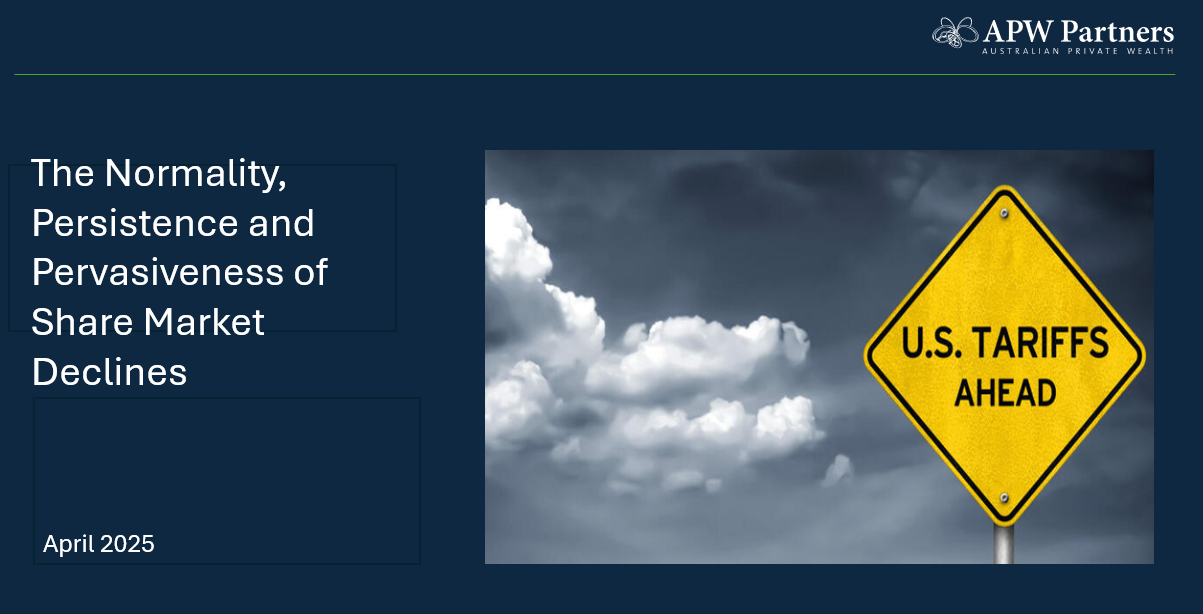Staying the course

Financial markets now predict a soft landing for the economy
At the start of the year most market commentators seemed convinced that the economy was heading for a hard landing and by the end of the year interest rates would need to come down to get us out of a recession. The obvious trade was to get out of equities and load up into bonds as they would be beneficiaries of higher income and falling rates. But equities have continued to climb while yields keep edging upwards and now market commentators agree that we are in for a soft landing.
At the start of this year most market commentators were convinced that the US – and indeed Australia – would enter a recession this year. Market measures – such as an inverted yield curve – persistently reinforced the view (according to the experts) that the sudden increase in interest rates over the last 12 months would result in a hard landing, resulting in central banks having to cut rates as early as the end of this year to get the economy moving again.
If you took action on this narrative then you would have followed the path to get out of equities and load up into bonds. After all, if the economy is going to go into recession then stocks are surely going to tank, and if interest rates are going to start coming down in the near future then bonds are going to rally, taking back all their losses from 2022. It seemed like a perfectly reasonable course of action.
But the dreaded recession – while it still may happen – hasn’t occurred yet. Since the start of the year the US market[1] is up some 22% (in AUD), and the World ex-USA index is up 16% (in AUD). The chart below shows the daily performance of the three indices since the start of the year.

[1] Indices used are the MSCI USA Index (in AUD), MSCI World ex-USA Index (in AUD), Bloomberg Global Aggregate Bond Index (hedged AUD). Date range 1-Jan-2023 to 15-Aug-2023.
Meanwhile, the highly anticipated rally in bonds is yet to materialize. The thinking here is that even at the end of 2022 many economists and commentators felt that the “terminal rate” – the peak of cash rates – was very close and that bond yields would not go any higher. A global bond fund would now start earning 4% to 5% just by “rolling down” the yield curve.
Furthermore, once the economy sharply contracted due to the fastest rate rises in modern history, then central banks would need to bring rates back down again to get the economy moving. Falling yields means capital appreciation for bond holders, and a general view was that this could be an extraordinarily good time to load up in bonds.
And this view seemed to be vindicated in the first quarter of 2023, when Silicon Valley Bank became insolvent. It’s collapse, the collapse of several other smaller US regional banks, and the turmoil surrounding Credit Suisse Group spurred a frantic rush for safety, evoking memories of the GFC. Volatility gripped global markets and yields on bonds fell dramatically as the likelihood of global recession increased. But those banking stresses faded into the background, and measures of risk, such as volatility, came back down.
A surprisingly resilient economy gave warning that the job of beating inflation is far from over as data shows that while inflation is coming off its highs the economy is still growing at a faster-than-expected pace. As the chart below shows bond yields have continued to edge higher after the banking crisis, and the Global Bond Index is up just over 1% (in AUD) year to date. Well, at least its positive.

Now most market commentators agree that the chance of a hard landing is very slim, and that central banks have pulled off a miracle by navigating the narrow road to bring the economy to a soft landing after one of the most concentrated rate-raising cycles in decades.
The US yield curve still shows an inversion, but the sharp increase in long-term borrowing rates relative to short-term rates means bond investors now believe the world’s largest economy is likely to have dodged the feared hard landing as policymakers near the end of their tightening cycles. In plain terms this means the market has increased the odds of a soft landing.
It may well be premature to declare victory over inflation and that a recession is now off the table. There are still risks that inflation proves sticky and central banks may have to do more. It could be that a recession will take longer this time to eventuate due to a lag in monetary policy. Everyone agrees that both the US and Australia will see a slowing in their economies – this is already happening – but with the the economy holding quite well, and inflation coming off, there may be no need to cut rates this year or next.
What does all this mean for investors? It means no one knows whether we will have a hard landing or a soft landing for sure, and certainly no one knows what either outcome means for the equity or bond markets. Ultimately the best course of action for investors is to ignore the constant news cycle that reports on every inflation print and every interest rate rise as if it can determine the future of their portfolio.
What does matter to investors is staying the course. Making the trade at the start of the year to get out of equities and load up into bonds seemed like an obvious course of action given that a hard landing was all but certain. But now a soft landing appears all but certain. The best trade is to tune out the financial media noise and stay the course in a well-diversified portfolio that has been created to meet your needs.


